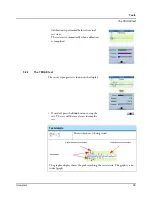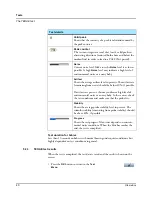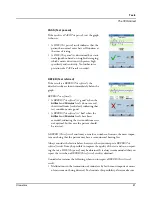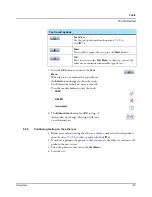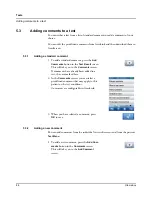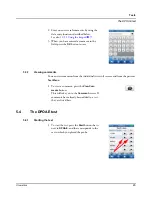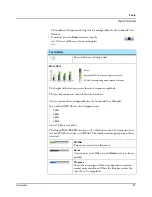
Otometrics
49
Tests
The DPOAE test
REFER (Test referred)
Note ·
Retro-cochlear hearing loss cannot be detected by DPOAE testing.
The DPOAE result specifies each frequency tested. This facilitates decisions concern-
ing further procedures. A
PASS (Test passed)
at a single frequency indicates near to
normal hearing in the specified band.
The major reasons for non-detection are too noisy test conditions or a poor probe fit.
In DPOAEs this is especially true for the lowest frequencies. Therefore, low fre-
quency
REFER (Test referred)
with high frequency
PASS (Test passed)
is a strong indi-
cator that test conditions were not optimal. If this is the case, it is recommended that
you improve test conditions and repeat the test.
A
PASS (Test passed)
result indicates that the
patient has normal outer hair cell function in at
least 3 out of 4 different frequency regions of the
cochlea at the time of testing.
A single frequency
PASS (Test passed)
is deter-
mined by a statistical algorithm based on
weighted averaging, which ensures high-sensitiv-
ity detection.
If the result is a
REFER (Test referred)
, the
detailed results are shown immediately below the
graph.
A
REFER (Test referred)
result indicates that in at
least 2 frequency bands out of 4, no significant
DPOAE response could be detected.
Summary of Contents for AccuScreen ABR
Page 1: ...AccuScreen OAE ABR Screener User Manual Doc no 7 50 0920 US 02 Part no 7 50 09200 US 0459 ...
Page 8: ...8 Otometrics Table of Contents AccuScreen OAE ABR Screener User Manual ...
Page 66: ...66 Otometrics Printing Printouts from label printer ...
Page 82: ...82 Otometrics Handling Data in AccuScreen Deleting data ...
Page 88: ...88 Otometrics Maintenance and Cleaning Battery safety and maintenance ...
Page 98: ...98 Otometrics App 2 Status and Error Messages Usage and test related messages ...





